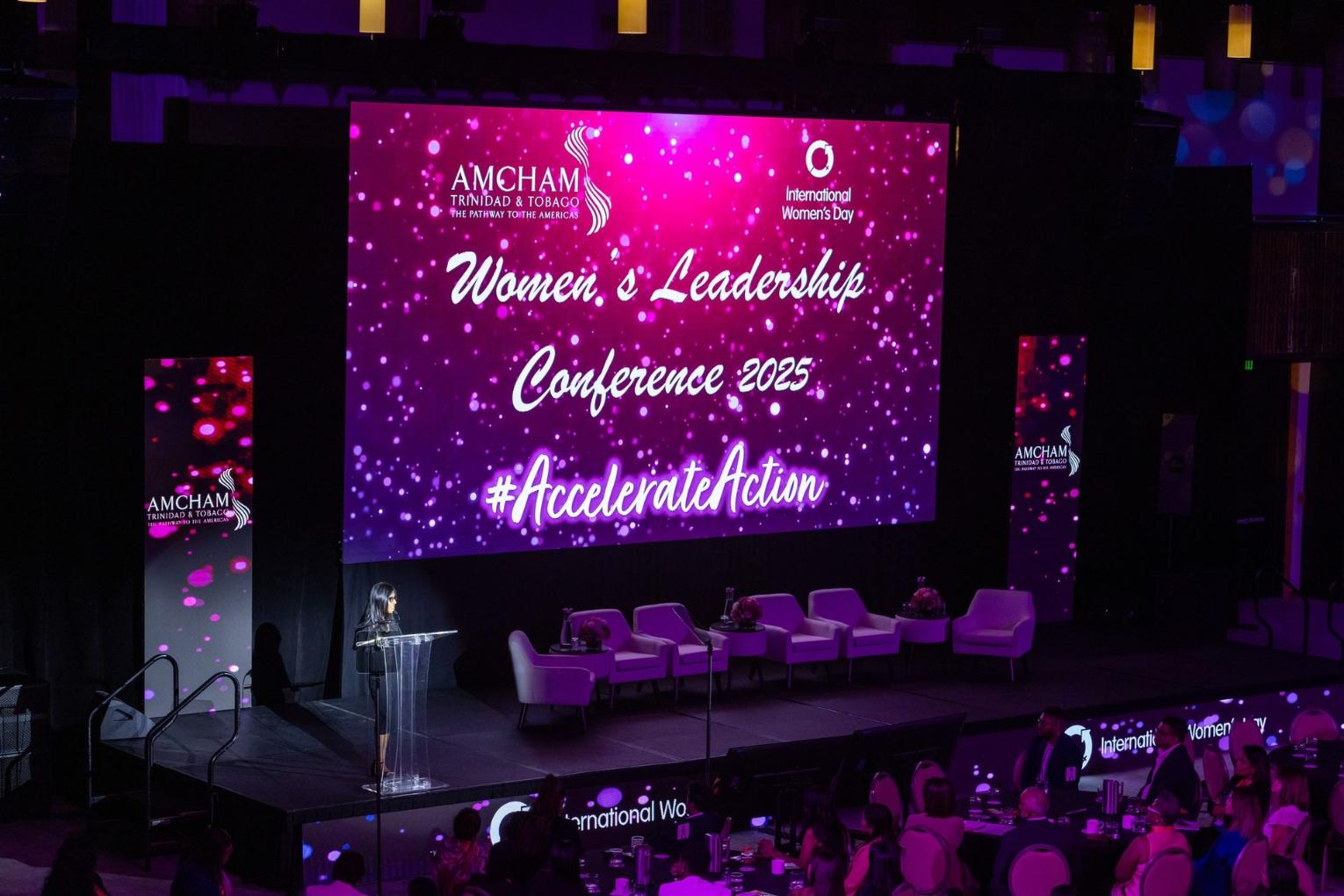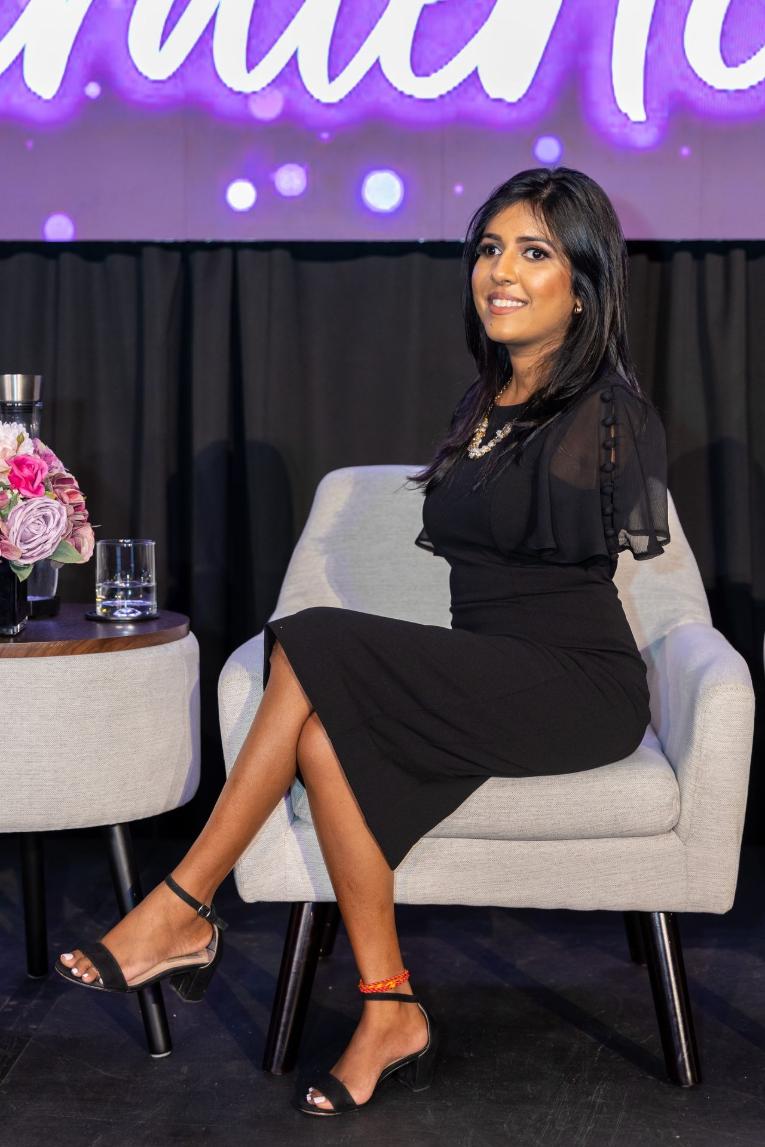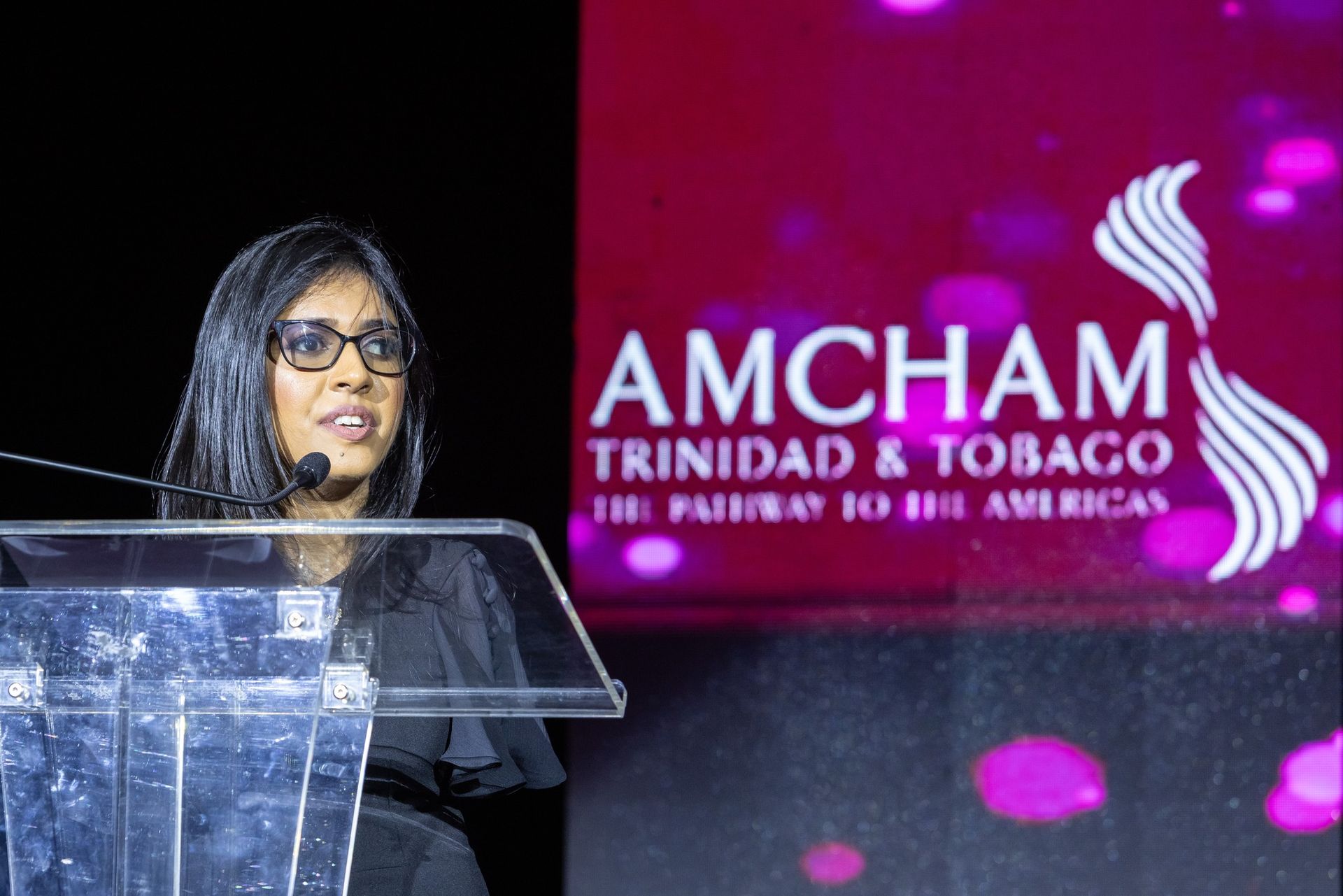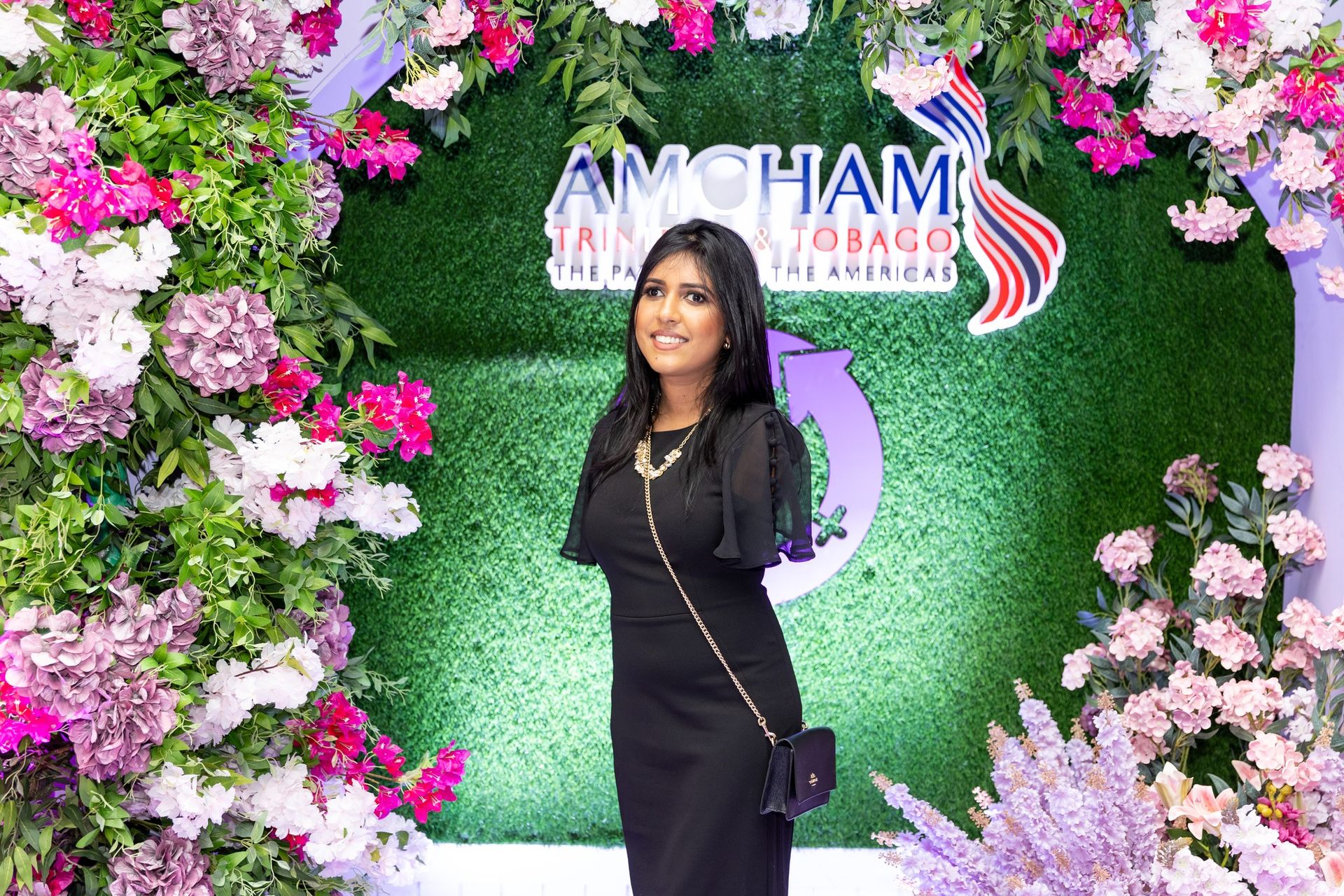Breaking Barriers:
The Urgent Call for Women to Lead and Rise Above Bias
By AMCHAM T&T Staff Writer

LINKAGE Q1 (2025) - ACCELERATE ACTION
A
s the world commemorated International Women’s Day on March 8th, the conversation surrounding gender equality was as pressing as ever. The fight against systemic bias and discrimination is not just a distant struggle—it is a lived reality for countless women across the globe.
This year’s IWD theme, “Accelerate Action”, underscored the urgency of dismantling barriers that hinder progress, reinforcing the need for decisive action. It is a call that resonates deeply with many, including Veera Bhajan, the Keynote Speaker at AMCHAM T&T’s 11th Women’s Leadership Conference. As an attorney, disability advocate, and inspirational speaker, Bhajan has defied expectations throughout her life. Born without arms, she not only overcame physical limitations but also challenged societal prejudices to carve out her place in the legal profession.
Having been the recipient of the Hummingbird Medal Silver for Youth Inspiration and Development in 2005, she also made history as the country’s first armless attorney. But despite her accomplishments, she has faced significant obstacles—perhaps none more telling than her experience at the Equal Opportunity Tribunal (EOT), where she was unjustly dismissed from her position as a lay assessor.
“It wasn’t just a job. It was a position where I knew I could make a difference. But despite my qualifications and commitment, I was removed—without cause, without explanation. It was a stark reminder that bias and discrimination don’t always come in obvious forms; sometimes, they hide behind bureaucracy and silence,” Bhajan shared in her Keynote Address where she received a standing ovation from the audience.
The injustice did not deter her. Instead, it fuelled her resolve to continue fighting—not just for herself, but for all those who face systemic discrimination.
The Unseen Barriers
Bias is not always overt. It does not always manifest in exclusionary policies or outright discrimination. More often, it exists in subtle, insidious forms—dismissive glances, skeptical responses, and whispered doubts that collectively erode a woman’s place in professional and personal spaces.
“When a woman speaks in a boardroom, and her words are met with skepticism, while a man says the same thing and is praised for his brilliance—that is bias,” Bhajan states. “When a woman of colour is told she must work twice as hard to earn half as much respect—that is bias. And when a woman with a disability is seen for her perceived limitations rather than her abilities—that is bias.”
Bias, when left unchecked, evolves into systemic injustice. It becomes embedded in workplace cultures, hiring practices, and leadership structures, making it even more difficult for women—especially those from marginalised communities—to break through.
For Bhajan, this fight is not theoretical. Denied opportunities, questioned about her qualifications, and systematically excluded from spaces she rightfully deserved to be in, she faced a choice: to accept these biases as truth or to challenge them. She chose the latter.
“My journey was not just about overcoming physical limitations,” she explains. “It was about confronting a world unwilling to believe in my potential.”
“But bias does not disappear when ignored and injustice does not resolve itself. Silence is the oxygen that keeps oppression alive,” she asserts.
The Systemic Nature of Bias
The struggle for women’s equality extends beyond the workplace. It seeps into personal lives, shaping expectations about how women should behave, look, and aspire.
“We are judged not just for what we do, but for who we are,” she says. “The standards of beauty, the expectations of how we should speak, and the limits on what we can dream—all stem from a society built on archaic narratives.”
Bias against women is also perpetuated by women themselves. “It is not just men who hold these prejudices,” she points out. “Women, too, can be enforcers of the very biases that hold us back.”
Bhajan believes that the most profound battle is not against external bias, but against the internalised beliefs that keep women from stepping into leadership.
“For years, I played small,” she admits. “I held back, doubted my worth, and second-guessed my potential. But I have learned that we are not meant to shrink ourselves to fit outdated expectations. We are meant for greatness.”
Self-led leadership, she argues, begins with rejecting self-doubt and reclaiming personal power.
“True empowerment is not about waiting for permission. It is about owning your worth and stepping forward despite the fear, despite the bias, despite the barriers.”
But the fight against systemic bias against women cannot be won in isolation. Women must support and uplift one another rather than compete for limited opportunities. Allyship is also critical—men must use their privilege to advocate for equality and challenge discriminatory practices.
“As women, we often wait for someone to give us permission—to speak, to act, to take up space,” she says. “But no one can give you permission to live the life you deserve. You must take that permission for yourself.”
Conclusion
The journey to gender equality is long, but it begins with action. Women must refuse to accept the limitations imposed on them, challenge bias wherever it appears, and step into leadership with confidence.
For Bhajan, her unconventional path has led her to understand an undeniable truth.
“While I was born without arms, I possess something even more powerful: the strength of my spirit and the fire of my will. With these tools, I continue to build my own path.”
Her message is clear: the time for change is now. Women must rise—not just for themselves, but for the generations to come.